I have written in the past about night raids and aggressive ISAF convoy tactics causing unnecessary civilian casualties. I have also written on the importance of not allowing enemy fighters who attack ISAF units to live and fight another day. Counterinsurgency requires adaptation and my annoyance at night raids or shooting car loads of locals who come too close to convoys is that there are better ways to handle both situations. Nine years and counting, and I have seen little adaptation to the local environment by the American military and our NATO allies until now.
I have just witnessed adaptation by the military after spending some time with the Marines of Regimental Combat Team 1. They are operating in the southern Helmand province where the terrain is flat and the enemy is not able or willing to operate in large numbers. Prior to this trip, all my observations regarding military efforts have been “effects-based”. I had been on the outside looking in. I have never before traveled with a military patrol, nor have I had the opportunity to observe and talk with troops in the field.
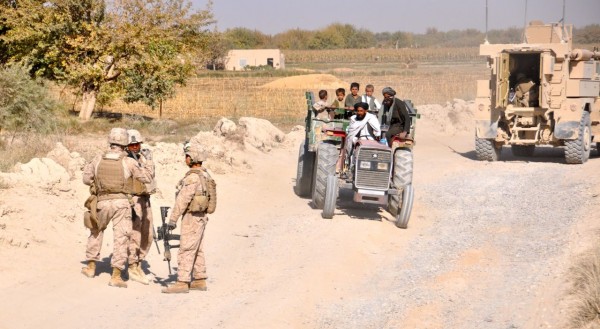
I have posted on the rules of engagement often, linking to Herschel Smith at The Captain’s Journal, with whom I am in complete agreement. We feel the rules of engagement are too restrictive and endanger the lives of ISAF and Afghan soldiers in the field. I posted recently about my first visit to RCT 1, where Col Furness and his staff do not feel the rules of engagement are too restrictive or inappropriate. On this trip, I had the opportunity to speak with grunts in the field, platoon sergeants, company commanders, as well as all three battalion commanders. The consensus is that the Marines do not consider the rules of engagement too restrictive. The only bitching I heard from the junior enlisted men concerned the strict PID – positive identification of a target before they can engage.
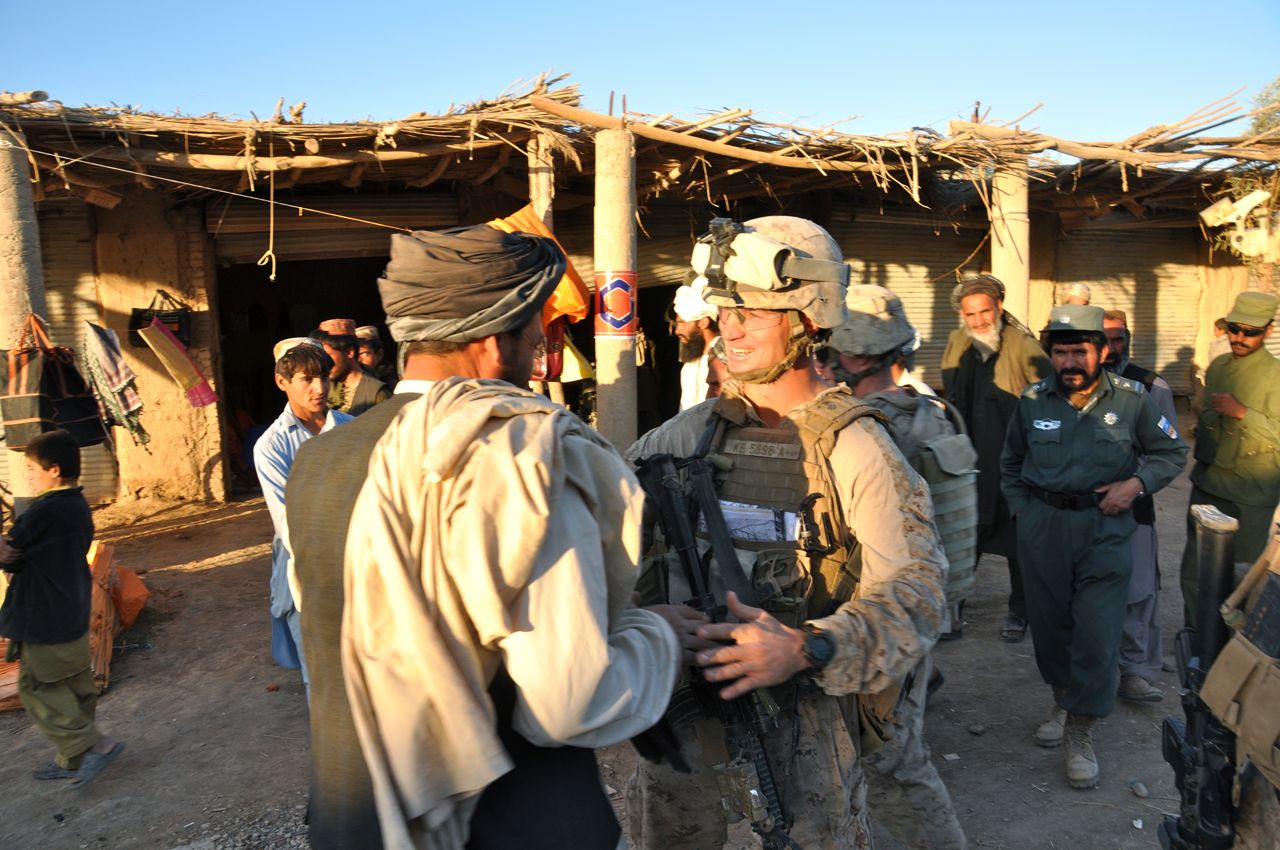
The examples I heard about the problems with PID were instructive. One of the Sergeants told me about an incident where the lead MATV had hit a large pressure plate IED that destroyed the mine roller attached to the front and most of the engine compartment. As the Marines worked to recover the vehicle, small teams of Taliban would open up from the outside of some compounds, a few hundred meters to the East. Then they would displace and do the same thing from the West. The battalion commander had strict rules about firing into the populated portions of blocks (this was in Marjah), and as a passenger in the targeted vehicle, he was standing right there, taking in the whole situation. The sergeant was frustrated because they never got a fix on the shooters, so they could not return fire. I asked Lt.Col Ellison about this, and he was blunt: “I’m not lighting up an area where families we know and support are living in order to suppress a couple of idiots who were shooting a few long-range, ineffective rounds.”
I’m growing fond of LtCol Ellison – that’s warrior talk there, brother.
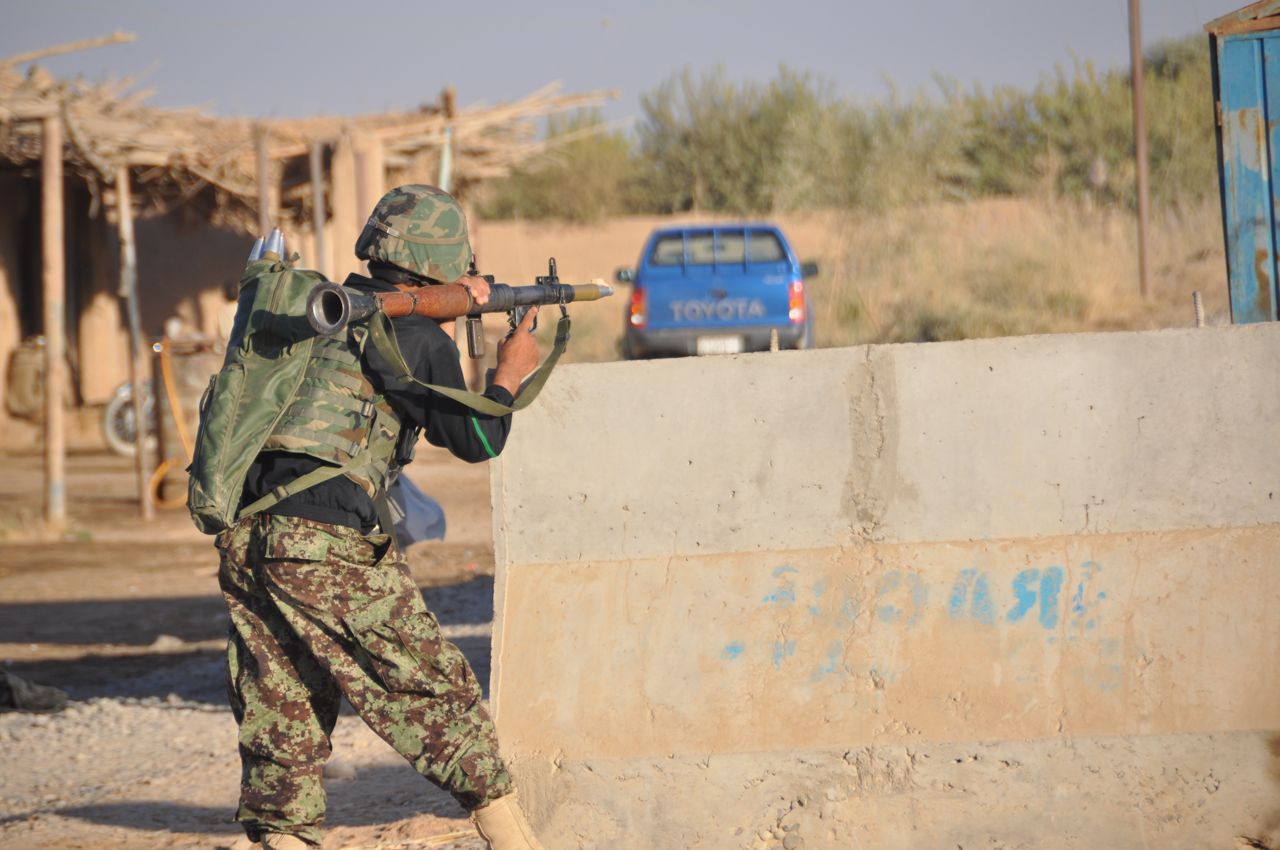
Another interesting story unfolded as we were touring the Choor Bazaar. The ANA troops had spotted a man carrying an AK-47, and they exchanged gunfire with him. The man ran into a local compound just as a patrol of Marines rounded the corner on a dead run. The Marines threw in a frag grenade, which killed the gunmen, and went into the compound to recover him and his weapon. The man’s brother came to the bazaar to speak to LtCol Ellison, telling him his brother was “not right in the head” and should not have been out with a rifle. He understood that his brother should not have been shooting at the ANA and that the Marines responded as expected to an active gunman. After saying that, he asked for his brother’s body and the AK-47 he had been using. LtCol Ellison was polite but firm, telling the man the Marines would not tolerate shooting at the Afghan security forces in Marjah because they leave him little choice in response. Having established this point, he apologized and asked the man to come in and make a claim for their loss (financial compensation for accidental death) at the district governor’s office. He promised they would have no further issues with the burial and told him a squad of Marines would be there to protect them. All of this was heard by the man’s neighbors, who crowded in to listen to the interpreter as the discussion progressed. The man then asked if he could retrieve his AK. Lt. Col. Ellison just looked at him, and his translator said, “No.” And that was that – the villagers headed back home, and we continued on our way.
Lt. Col. Ellison is an exceptionally gifted commander with a clear understanding of what he is doing and where his efforts are headed. His rules of engagement differ from those of his sister battalions to the north and south of him. He has packed away his 81 mortars and sent that large platoon out west in the desert across the Helmand river to interdict Taliban fighter infiltration. He only lets his company commanders shoot illumination rounds from their 60 mortars unless there are exceptional circumstances requiring HE (high explosive) rounds. He told me that the battalion that preceded him, the 1st Battalion, 6th Marines, had cleared central Marjah and that he was now solidly in the hold phase of the operation. He has deployed across over 80 positions, ranging from lone static MRAPs (manned by rotating fire teams) monitoring areas of high IED activity to squad, platoon, and company combat outposts. LtCol Ellison told me, “We shoot a lot of Hellfires and sometimes other air-delivered ordnance, but for the most part, our aggressive patrolling keeps the Taliban out. We’re driving the incident numbers into the basement.”

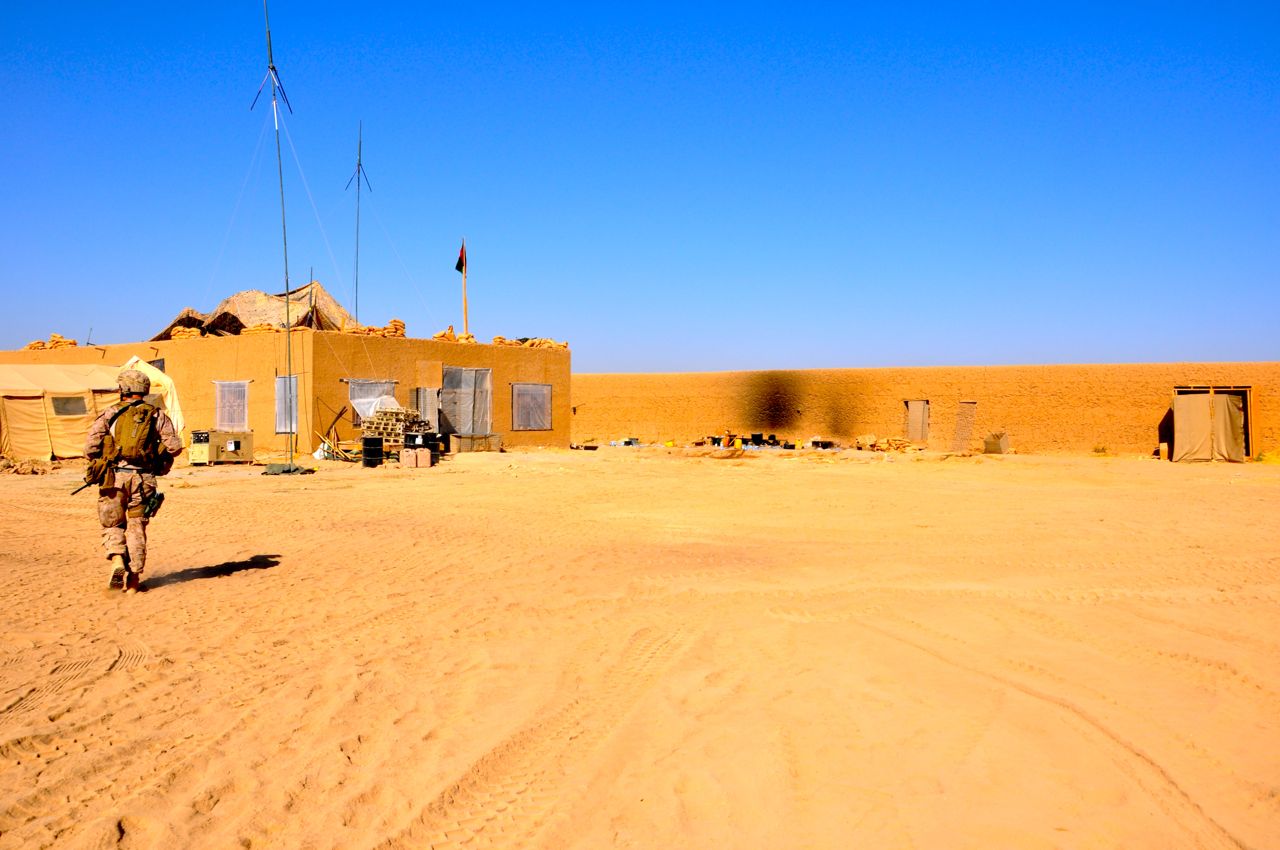
In the northern outskirts of Marjah and beyond, the 2nd Battalion 9th Marines (2/9) has been tasked with pushing the Taliban out of the populated areas and keeping them out. They have sections of 81mm mortars in each company patrol base and use them frequently.

The portion of 2/9’s A.O. that I saw looked exactly like the rest of Marjah. The same large grid pattern with clusters of houses surrounded by fields, but there were a lot fewer people visible in the streets and fields. The Marines patrol aggressively but get much more contact, and they are much quicker with the supporting arms and heavy machineguns. Fire missions must be cleared at the battalion level, but this is how the Marines operate, regardless of front-specific ROE, and the reason for this is de-confliction. They have a lot of Marines out patrolling at any given time and must know where all of them are before unleashing the firepower.
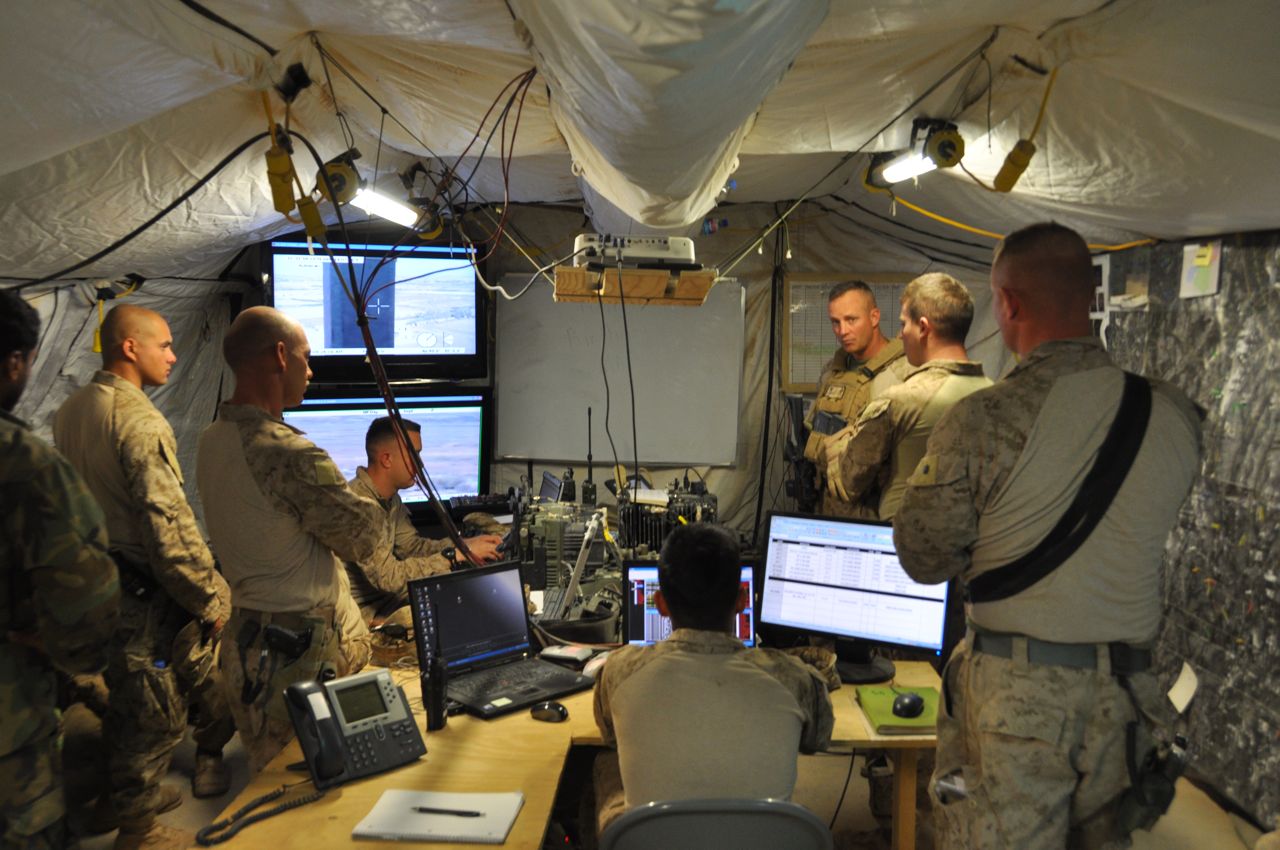
Rifle company CPs are now high-tech. The watch chief has a chat window open with the battalion and updates them constantly with the locations of friendly patrols, as well as a narrative of what they are doing. Accounting for them when clearing fire missions is virtually instantaneous. When a patrol makes contact or reports a casualty, the chat box appears on every operations screen in the region. This enables clearing fires or launching a medical evacuation to be accomplished within just minutes after the green light is received.
Marjah is the first place I have seen ANCOP, which stands for Afghanistan National Civil Order Police. The Marines make good use of them, and they also receive specialized training at Camp Leatherneck prior to deployment. The ANCOPs I saw in Marjah were clearly Tajiks from the North of the country. They spend a lot of time talking with the local people and seem to have a solid read on local atmospherics. I have seen articles like this one in the press about patrols from 2/6 looking for the houses of certain tribal members. I am guessing that was earlier in the deployment. They seem to know all the tribal members now and would be sending the ANCOPs out to locate the compound for a specific guy if they did not already know where he lived.
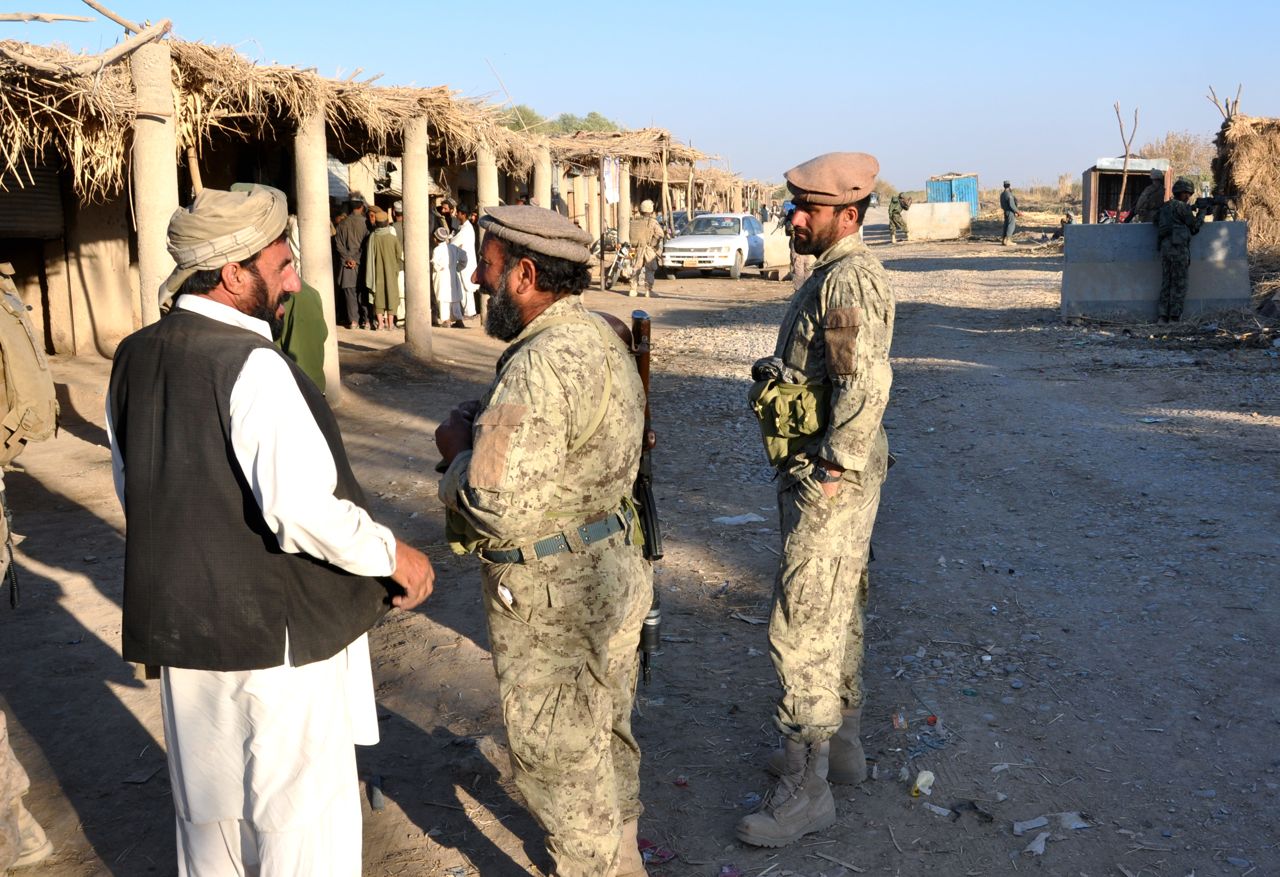
Marjah is a small area of Helmand province with a unique set of circumstances. It was fascinating to me that Marine battalions had adapted with different operational templates between units just a few miles away from each other. But that is what it takes to do counterinsurgency. The ability to adapt and make tactical determinations based on micro-level ground truth is essential to the mission.
The Marines have a distinct advantage in counterinsurgency due to the size of their maneuver units. Marine rifle companies, battalions, and regiments are much larger than their army counterparts. This is a legacy of World War II where the Marine battalion table of organization was designed to allow the battalion to function in the face of heavy casualties. Size matters in most things, and especially when it comes to boots on the ground, but the Marines also have another advantage: their well-documented bias for action.
Not all my readers thought Mac’s observation in this post (that this is a smart guy’s war) was that smart. I did at the time, and now that I have seen the line units in the field, I agree with Mac even more. I’m all for stopping most night raids and using those teams for village stability operations. I am also for adopting convoy techniques that fit the local environment so that the shooting of civilian vehicles (which I have to admit has dropped off considerably over the past year) stops. However, it seems to me that the current ROE is proving to be more than adequate for those who understand smart guy war.



1. LtCol Ellison is impressive.
2. My Bn Co’s were less so, back in the day. But every aspect of the Corps is more professional now -at least up to the rank of Colonel.
3. Adherence to the ROE looks possible, given the situation you describe.
4. IED’s and AH’s taking potshots are one thing. Sounds like things are measured and cadenced and the Marines very much in control.
5. Where problems occur is when you get a bite of a sh*t sandwich.
6. When that happened, albeit in another service and a pretty poor unit, at that, ROE’s went out the window and self preservation through violent action took place.
7. Our ROEs were fairly strict and if enough time passed, high level supervision could be expected overhead.
8. Talked to plenty of young Marines and soldiers back from Iraq and, now, AF.
9. Tell them we tried to follow our ROEs, but if we had to, did what we needed to stay alive. After, picked up the pieces as best we could to make it look like we had followed the ROE.
10. Every one of them stared at me in astonishment – I knew their guilty secret. They all said: “Goddamn sir, that’s just what we did.”
11. Obviously, am talking about soldiers and Marines that are out in the weeds, not in the rear areas.
12. Related that to a high ranking USMC officer. Got a Jovian glare and the response: “Don’t like to hear that.”
13. Yeah, well….
14. The biggest obstacle to implementation of good COIN policy and bolstering adherence to ROE is overcoming the “them and us” mentality.
15. Since that is a major leg of the morale structure, is easier said than done.
16. Apart from which, the distrust, distaste for and downright hatred of charlie, haji or whoever is hard to overcome. After all, for whatever reason, they earned it.
17. The troops I talk to have little use for the ANA, ANP or Afghan civilians.
18. That may be changing -but haven’t seen it yet.
V/R JWest
Only one rule of engagement is necessary. If shot at, RETURN FIRE.Vietnam 1968 outside of Danang area known as leeperville. We were shot at every time we were in range. Not allowed to return fire. Have the ROE makers to go and get shot at. SEMPER FI
Interesting post Tim. Good to know some thing are working. Did not know about the ANCOP.Are they just supported by the marines? Just wish it was not to late,so much time has been wasted.
Baba Tim,
Agree with you that things are getting better in Marjah and central Helmand valley.
However, can we really say that things are going well in Helmand as a whole? I am skeptical as are some friends. Why? About 36% of all attacks in Afghanistan take place in Helmand and Nimruz. Nimruz is pretty pro GIRoA, anti Taliban and quiet, so we are really talking about probably 33% or 34% of all Afghan attacks in Helmand, home to only 4% of Afghans [even after the large recent migration of Afghans back to Helmand.]
https://freerangeinternational.com/?p=3731
Do we really know that Helmand is going well overall? If so, where is all the violence happening? Northern Helmand [Sangin, Khajaki et all]? Near the Durand line in the south?
After Sangin settles down, where will the violence move? Elsewhere in Northern Helmand?
By my best estimate, there are now 80 ANA combat infantry companies in Kandahar, Helmand and Nimruz . . . with another 5 or 6 ANA combat infantry companies being added every 11 weeks.
This is in addition to 60% of the deployable ANCOP combat battalions.
If this is the strategy, to tie down this much ANSF in Kandahar and Helmand indefinitely, then the current planned number of training seats for the ANP and ANA at end state are insufficient. The number of ANSF being trained at any given time needs to be increased. [It is a shortage of training seats, not Afghan recruits that is holding back ANSF development.]
Tim, did you get to read the latest 1230 report?
http://www.defense.gov/pubs/November_1230_Report_FINAL.pdf
Notice that the “only” provincial AUP in the country that is independent and doing well is the Marine mentored AUP in Farah.
Helmand AUP is also coming along well.
Why are the Marines are better at embedded advising than almost anyone else?
Happy Thanksgiving guys.
You too Matt. Tim wishing you and all there a happy an safe day.
Hey Thanks guys – Happy Thanksgiving to all of you too.
It appears as though the Marines are “getting after it”… Question Baba, when under attack do the Marines use “old school’ fire and maneuver to advance and flank the enemy or do they do like the Army, patrol in areas where they are surrounded by high ground so they start from a disadvantage, remain in place, usually in a FOB and then RELY on CAS? All of my embeds have been with the Army so I have no knowledge of the Marines form of “getting after it”. If it weren’t for CAS and artillery there would be a MUCH higher number of US casualties. It is unfortunate that the Taliban/ miscreants are putting the pressure on US having us react to them instead of being afraid to show themselves in public for fear of their heads exploding… God bless the servicemen… and especially the snipers. More sniper operations more often. please
The Marines do the old school fire and movement but the guys in the initial engagement will hold short to let Marines respond from a different direction IOT avoid the IED’s which are always there. The Talibs tried to fight the Marines like they did the Sov’s two years ago but the Marines caught on quick and started using their MRAP’s for deception and base of fire duty while they maneuvered in on the bandits. In response the Talibs started trying to draw the Marines into IED laced areas by shooting and scooting but again the Marines caught on. Now the name of the game is to pin them in place by cutting all routes of egress and pin them behind their IED fields while waiting for a precision platform to show up and put the Hellfire on them. The flat terrain and lack of support from most of the locals makes it impossible for the Talibs to fight the marines like they fight the army in RC East. Plus the Marines are always out in the villages on foot which makes it hard for villains to move around or mass or stay in one area for long periods of time.
The one thing I heard platoon commanders bugging the Regimental CO about was more “combat enablers” which is code for sniper teams. Every position wanted them and it is easy to see why – flat terrain without too much vegetation and an enemy who is as stupid as the day is long. Those sniper teams stay busy – there must be dozens if not hundreds of Marine snipers who have racked up years of combat experience by now. I can only imagine how lethal they must be. The Marines love having them around and I bet there are many really interesting stories to be told by this cohort someday. Too bad Hollywood is full of knee jerk liberal scumbags because sniper stories make good movies – not that anyone in the film industry would recognize a good movie there days.
Very interesting. Tim, is there any word about how the Marines use UAVs in these engagements? Like when they make contact, are they able to get a handheld UAV up in the air to get eyes on the enemy so they can track him? Because if they could pin that enemy in place for a few minutes, they could get something in the air. I also think it would be interesting if these handheld UAVs, like the RAVEN were weaponized so if the Marines wanted to, they could ram the UAV into the enemy and blow him up.
The TiGER is the only weaponized micro-drone that I know of that could fit the bill.
————-
MBDA TiGER Tactical Grenade Extended Range
From Tactical Life.com
Countering indirect fire, such as a mortar behind a hill or a suspected rocket launcher, usually involves blanketing an area with artillery or calling in an air strike that might or might not arrive in a timely manner and might or might not cause collateral damage. Now, on the Battalion level, a squad in the field can prep, launch, direct and attack a target up to two miles away with the new MBDA TiGER Tactical Grenade Extended Range, a candidate for the Army’s Lethal Miniature Aerial Munition System program. The TiGER can be used to counter a sniper or the destruction of VBIEDs and IEDs using two on-board 40mm grenade warheads.
The TiGER is guided by a miniature, nose mounted video camera equipped using a laptop or handheld keypad with a visual display. It can be quickly deployed and launched by hand to visually seek out and then kamikaze the target by an operator on the ground simply tapping on the target’s location on the video screen and BOOMone less crew-served mortar, IED, sniper or rocket launcher. Put the computer away and carry on with your day. For additional information please view mbdainc.com or call 818-991-0300×132.
Talking of victory has anyone noticed that the $ 4 trillion over 10 years spending reduction goal of the Congressional Debt Commission is probably very close to the cost of the Afghan campaign if it were to stay at about the same level it is now? Give me a Pyrrhic Victory or give me lower taxes!
Or the international community can give the ANSF $10 billion per year in funding over the long run and facilitate the ANSF winning over the long term.
Much of this funding would probably come from India, Japan, Russia, Iran, Europe, South Korea, Canada, Australia.
The refusal of the international community to fund long term education for ANSF officers is difficult to understand. It isn’t like there is any shortage of capable ANSF officer applicants who performed well in their 12th standard exams.
Afghanistan admits 20 thousand freshman in college. Only 650 of them are in the ANA National Military Academy-Afghanistan [NMAA], and to my knowledge none are on the ANP track.
Because of the need for officers joining the fight quickly, ANSF officers might need “two in the box” officer candidates where two officers share the same position [command the same platoon, or are deputy commander of the same company, or have the same position on the ANA battalion staff, etc.] and flip back and forth between ANSF college and combat. They could flip every six months and be in continual contact with each other.
Some companies such as Intel corporation have used “two in the box” for a long time. [where two executives share responsibility for the same function.]
I don’t understand why so many Americans prefer to spend $120 billion/year in direct operational costs versus spend $10 billion/year on the ANSF.
Harlan, who do you want to win? The ANSF or Taliban? I know you don’t think the international community should spend much to help the ANSF defeat the Taliban. But where are your sympathies in this fight? Are you concerned about the Taliban gaining greater power in Pakistan and obtaining Pakistani weapons?
Anan. You actually don’t know what I think…until now… but I appreciate the fall back to accusing me of siding with the Taliban. What’s next a Hitler reference?
I think that the war is actually three sided. The Taliban, NATO and the GOA (AKA the Northern Alliance). NATO has lost. Whatever occurs in the future won’t be worth what we’ve already spent.
NATO doesn’t know what it wants beyond saving face for generals, diplomats and pols. Pakistani nuclear weapons are a red herring. If they were a real concern then both USMC RCTs should be at Pakistani atomic weapons sites and not trying to pacify a handful of districts in Helmand.
The Taliban can’t win in the sense of forming a government as long as the US is hostile and the Northern Alliance is an enemy. JDAMs make cabinet meetings difficult and worries about terrorist training camps are nonsensical for the same reason quite apart from the fact that “terrorist training” in Afghanistan is up since 2004.
The GOA is winning as it soaks NATO for billions while having western troops do most of it’s fighting. Karzai et al want a stalemate that keeps the cash coming. Most of the GOA hostile actions against NATO come in the form of theft and corruption- similar to the Mafia in Americas relations with civil society and the justice system. The odd case of violence… but it’s not personal only business.